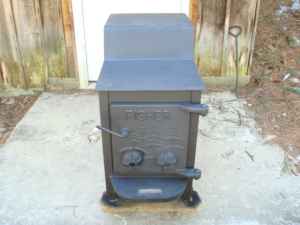Wood Stove EfficiencyWood stove efficiency can seem like a confusing thing. What do those numbers mean? The EPA rating for heating efficiency is set at a certain number depending on the type of heater. Non-catalytic will have a default value of 63%, while catalytic will show as 72%. Pellet burners will have a default of 78%. However, this is not the true output of the stove, as it obviously varies from model to model. Manufacturers will typically get the BTU rating using a full load of wood burning at optimum temperature. There is also a number called extraction efficiency, which basically measures how well the stove has burned away the wood and ash by checking the amount of leftovers after the burn. Less = more efficient. Heat transfer efficiency is a way to measure the change in temperature in a specially equipped room during a fire. The warmer the room, the more heat generated. These tests can be done by a third party and have good information. Here are some interesting articles from Omni-Test: Efficiency_articleWood_stoves_efficiency_article Whatever you choose, your wood stove will be much more efficient than a fireplace, which usually hovers around 25% or so. Like tips like this? Find out a lot more about home efficiency and energy saving at a trusted site: Energy efficient home: Basic ideas, motivation for saving energy, checklists and energy saving plans
|

